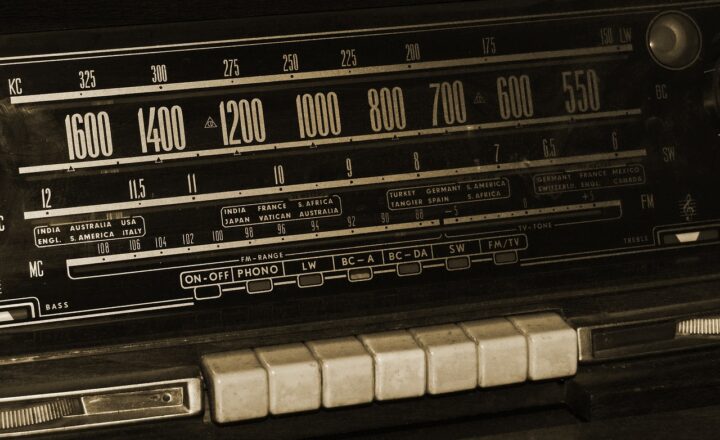
Radio has come a long way since its inception in the late 19th century. It started as a groundbreaking innovation in communication, evolving into a medium that has shaped the world of entertainment, news, and information access. This article delves into the evolution of radio, highlighting key developments from AM to FM and the digital age beyond.
1. The Birth of Radio: Early Beginnings
Radio technology roots trace back to experiments in wireless telegraphy during the 1890s. Inventors like Guglielmo Marconi and Nikola Tesla pioneered significant advancements, leading to the first successful transmission of radio waves. In December 1906, Reginald Fessenden broadcasted the first AM radio program featuring a mix of music and spoken word—an event many consider the dawn of radio broadcasting.
With radio technology rapidly advancing, the 1920s saw a surge in commercial radio stations. This decade marked the birth of structured programming, and stations like KDKA in Pittsburgh became household names. The excitement of radio began captivating audiences, igniting a new era of entertainment.
2. Understanding Amplitude Modulation (AM)
Amplitude Modulation (AM) refers to the method of varying the strength (amplitude) of the radio signal to encode audio information. It is one of the earliest forms of radio broadcasting.
However, AM radio has its limitations, including susceptibility to noise and interference. The modulation allowed for relatively long-range transmission, particularly during nighttime when the atmosphere preserves signal propagation. AM radio dominated the airwaves until the rise of Frequency Modulation (FM).
The Federal Communications Commission (FCC) in the United States officially allocated AM broadcasting frequencies during the late 1920s, classifying radio as a unique medium requiring regulation. The rise of organized broadcasting led to the establishment of the National Broadcasting Company (NBC) and Columbia Broadcasting System (CBS), creating strongholds in American radio.
3. The Advent of Frequency Modulation (FM)
The introduction of FM radio in the late 1930s by Edwin Armstrong represented a significant milestone in radio technology. FM’s approach varied the frequency instead of the amplitude, resulting in improved sound quality with less interference and static.
FM radio broadcasts became popular in the 1950s and 1960s, appealing primarily to younger audiences and musical tastes. The sound quality of FM was so superior to AM that it led to extensive adoption across multiple platforms, including stereo broadcasts. Consequently, FM stations began programming music and content tailored to their audience, setting the stage for the radio formats we recognize today, such as Top 40, Classic Rock, and Talk Radio.
The FCC’s actions made FM transmissions available to a broader audience, offering commercial stations a platform to flourish outside traditional news programming.
4. The Rise of Public Radio and the NPR Revolution
The 1970s heralded the rise of public radio in the U.S. The establishment of the Corporation for Public Broadcasting (CPB) in 1967 facilitated funding and support for public radio outlets, leading to platforms like National Public Radio (NPR). NPR introduced quality programming that appealed to listeners interested in news, culture, and educational content, differentiating itself from commercial broadcasting.
The launch of Weekend All Things Considered and Morning Edition fundamentally changed public radio’s standing, garnering respect across demographics and establishing a dedicated listener base that remains loyal today.
5. The Digital Spectrum: Internet Radio and Satellite Broadcasting
With the dawn of the internet in the 1990s, radio experienced another transformation. Internet radio lets listeners stream their favorite stations and discover new genres and shows worldwide. Platforms like Pandora and Spotify revolutionized music consumption, but internet radio remains a crucial way to access local content.
Satellite radio, exemplified by SiriusXM, emerged as another player in the realm of radio, providing a subscription-based model that allowed for a vast array of channels, commercial-free programming, and content tailored to specific interests. This innovation provided services to even the most remote areas where traditional radio signals faltered.
6. The Current Landscape of Radio in the Digital Age
Today, radio exists across multiple mediums—AM, FM, internet, and satellite—serving diverse audiences worldwide. The rise of podcasting has also changed the way people consume audio content, allowing listeners to access information and entertainment on their own terms.
With platforms such as Apple Podcasts, Spotify, and Google Podcasts, the podcasting boom has crafted avenues for storytelling, political commentary, and niche topics previously unexplored in traditional radio formats.
Despite technological advancements and competition, radio maintains its relevance, adapting to consumer needs and preferences. Stations have embraced social media, online streaming, and on-demand content as ways to remain engaged with their listeners and broaden their reach.
7. Conclusion: The Future of Radio
Radio has undergone an incredible journey, evolving from rudimentary AM transmissions to the robust digital landscape of today. With advancements in technology, radio continues to innovate, embracing new platforms and methods of delivery while retaining its core mission: providing a voice to diverse communities, sharing stories, and disseminating information.
As we move into the future, radio’s resilience and adaptability will allow it to endure alongside emerging trends, ensuring this beloved medium remains alive and thriving for generations to come.








